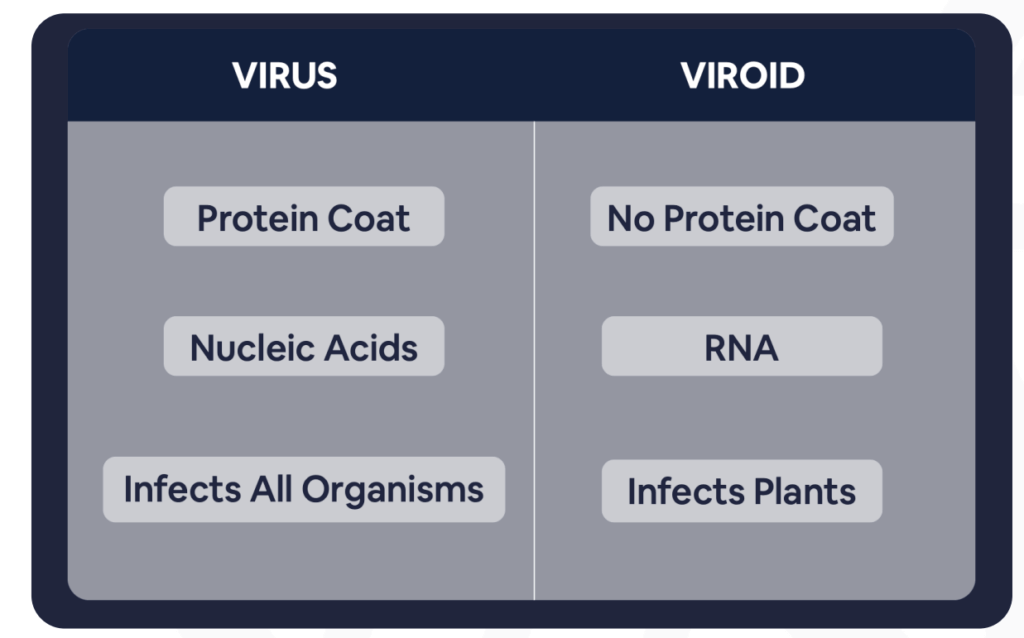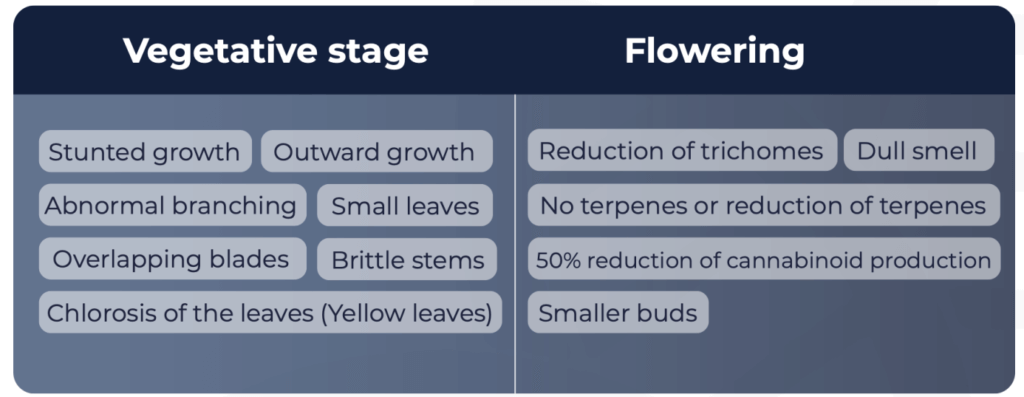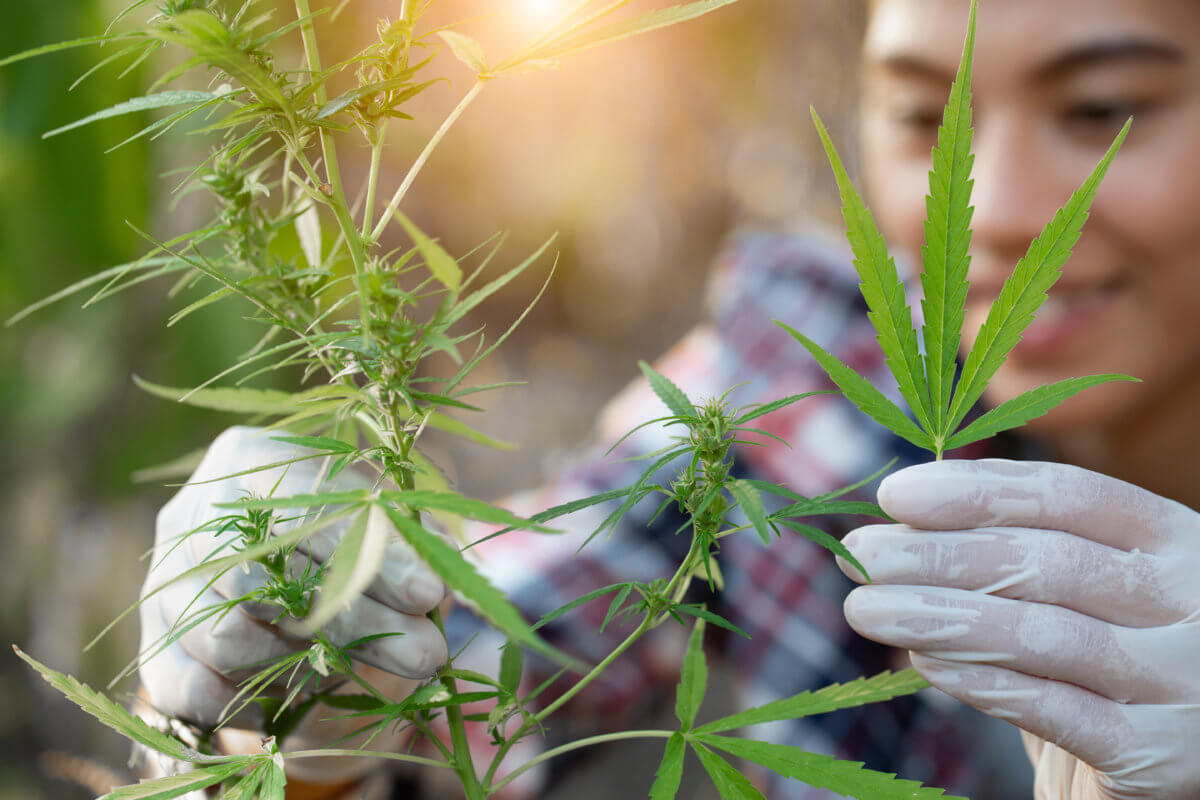by Angel Fernandez, María Zuccarelli, and María de Catarina, MyFloraDNA
For many years, growers and breeders have speculated why “dud plants” are seen across different cannabis crops.
It is a fact that cannabis has faced many viral infections. Due to viruses and viroids, some varieties mutated into genetic changes over time, altering the evolution of the plant.
But… how can we detect Hop Latent Viroid (HLV)?
Hop Latent Viroid (commonly known as Dudding Disease) is a single-stranded, circular infectious RNA. It is not a virus. Let us explain the difference:

Viroids only replicate in plants. Also, viruses are more complex than viroids. Viroids are compounded by only RNA, while viruses are composed of a protein capsule enveloping their genetic material.
Viruses infect new hosts only once they enter a host and replicate on it. Viroids are transmitted through direct contact of a healthy plant with an infected one. Also, can be transmitted by contaminated tools and instruments (gloves, scissors, tweezers, even human hands).
Talking about HLV, we must remember that this viroid is latent, so there are many asymptomatic transmissions. It can spread without symptoms, and you will only realize it when it is too late.
HLV Symptoms:
HLV is a silent viroid, meaning that this viroid may or may not show early visual clues from its presence. Some physical symptoms in cannabis plants are:

What about transmission?
This issue is important, so please take note. If you have any doubts about an infection of Hop Latent Viroid in your garden, TREAT EVERYTHING AS IF IT IS INFECTED. Download here our guide on how to treat infected material.
HLV and other viroids in your garden or greenhouse can spread quickly from infected to healthy plants. The main transmission causes are:
- Infected equipment: sterilize the equipment before working on new plants to reduce the possibility of contamination.
- Clones: before cutting, we recommend doing a complete pathogen test, to avoid infected clones.
- Seeds: this is currently under research, but HLV has an 8% chance of being present in the seeds of an infected mother plant.
- Human touch: cultivation managers and staff have to sterilize their hands and gloves before jumping from one plant to another. A simple touch is enough to transmit HLV.
- Bugs and pests: bugs and pests are always present, and their bites may transmit HLV, spreading the pathogen through your entire garden in a blink of an eye.
How can you prevent HLV?
Here are some essential tips:
- Keep your equipment clean. You can read more about how to sterilize your tools on our Instagram profile.
- Make sure you have pests under control
- Tissue culture: HLV can travel through the plant’s vascular system and may be left behind in older tissues as plants develop. It can outgrow the problem by producing clones from the infected plant. The more cuttings a grower roots, the higher the chances of selecting a clean one.
- Pay special attention when visits come by: HLV may come in a visitor’s hand, glove, or even shoes!
- When a plant or leaf enters, please do not accept it unless it has a negative DNA HLV test. It is the only way you can be sure it is not a threat to your garden.
 Who asks if you think HLV may be in your garden?
Who asks if you think HLV may be in your garden?
Thank you for reading! We hope you find this information useful. In case of any doubts, do not hesitate to ask us regarding any related topic and download our Complete HLV Guide here. We highly recommend you consult with DNA Laboratory. They will guide you through the process, test your plants, and let you know if they are infected with HLV or not.
Angel Fernandez, CEO & Co-Founder at MyFloraDNA. “It is time to fill in the gap between DNA Sciences and Agriculture. MyFloraDNA is willing to show the huge opportunities that exist for modern genetics in agriculture. Now, it is time for another agricultural revolution”
Co-author: María Zuccarelli, CMO at MyFloraDNA.
Editor: María de Catarina, PR Intern at MyFloraDNA.
About MyFloraDNA: We are a genomic laboratory based in Woodland California, delivering modern genomics for the Cannabis Industry.
Our services include Trait detection (cannabinoid profile and sex/gender ID), Pathogen Detection, and Genetic Validation Services. We offer breakthrough solutions using the inner power of your plants.


Follow NCIA
Newsletter
Facebook
Twitter
LinkedIn
Instagram
–